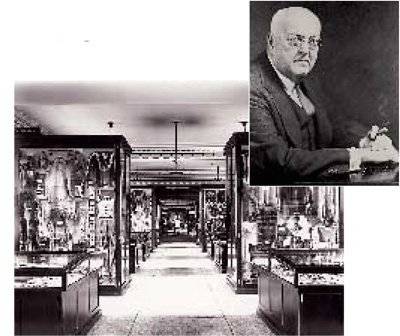
In the early 20th century, the University of Pennsylvania Museum competed with other museums in the United States and Europe for collections of primitive and ancient art. Museum officials out- fitted expeditions and archaeological excavations and negotiated with antiquities dealers and private collectors in the quest for objects of artistic and cultural achievement.In that climate, private collector George Gustav Heye (1874–1957) had an overwhelming passion for American Indian artifacts, and a substantial fortune, allowing him to assemble the most extensive collection in the world from American Indian material culture.
By 1908, insects were ravaging the collection, which was in storage in New York. Heye and George Byron Gordon — then curator of the General Ethnology Section (he became director in 1910) — forged an agreement to deposit the Heye Collection of North American Ethnology with the University of Pennsylvania Museum, as stated in Gordon’s report to the Museum’s board of managers, “with a view to presenting them unconditionally in the near future.” Heye was also elected vice president of the Museum’s board of managers. Many of his specimens were catalogued, conserved, and exhibited in two renovated galleries. With his help, the Museum hired additional curatorial staff to manage the collection. For almost 10 years the Museum cared for the collection, and Heye continued to expand it, sending more expeditions to the field.In 1917, Heye shocked the Museum by announcing his resolve to move the collection back to New York and establish the Museum of the American Indian. The terms of the deposit agreement left no recourse for University of Pennsylvania Museum officials, who had believed that the collection would eventually belong to the Museum. Their devastation at the loss was compounded by the fact that during the 10 years Heye was on the board of managers, he sponsored most of the institution’s North American research. The product of that research also went with Heye to New York.
Heye’s Museum of the American Indian opened to the public in New York in 1922. Decades later, in 1989, after years of struggling with low attendance, financial trouble, and inadequate facilities, the Museum of the American Indian, Heye Foundation, was taken over by the Smithsonian Institution to become the National Museum of the American Indian. The Heye collection is moving once more, this time to Washington, D.C. Part of it will be exhibited in a new building on the Mall.
Alex Pezzati is the Museum’s archivist.
